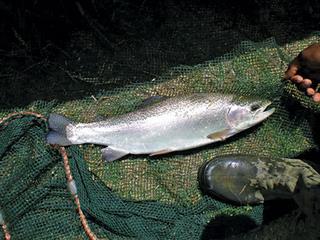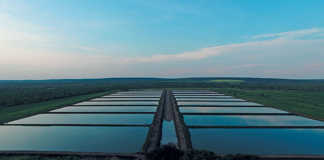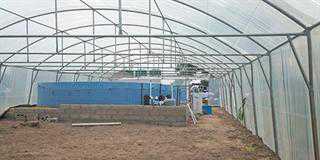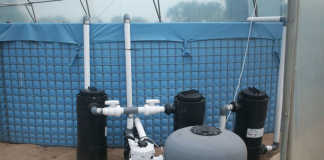
Three freshwater species are commonly farmed in South African aquaculture: trout, tilapia and catfish. The first is an established industry, largely restricted to areas of abundant, cool, clean water. The latter two, representing a fledgling sector, are mostly cultured in tunnel-type recirculating systems, so are largely independent of external environmental conditions. With the ongoing conservation debate and needs of aquaculture, it is important to clarify what realistic threat these species pose to our natural environment.
Trout are a demanding species, as in most places in South Africa they are far out of their comfort zone. With the numerous stockings carried out by nature conservation departments since their introduction in the early 1900s, trout are established in most upland river systems where they can survive. Many stockings were unsuccessful. Sidney Hey, for example, tried to stock the apparently suitable Salt River in the Southern Cape in the 1950s, and failed. And an extremely determined one-legged man hiked many kilometres in an attempt to stock Lake Sibaya in KwaZulu-Natal with bass, but did not manage to establish a viable population.
Tilapia survival
Much of South Africa consists of an upland plateau and conditions here limit the survival of tilapia. Our indigenous blue or Mozambique kurper/bream (Oreochromis mossambicus) requires a winter water temperature higher than 9,5°C. Only in large artificial impoundments can the adults survive if winter water temperature falls below 12°C for several days. Survival is limited to brackish coastal estuaries at the extremity of their range. In the Lower Albany area, for example, blue kurper are not found inland of Bathurst, despite numerous attempts to stock farm dams.
In the 1960s, the then Department of Nature Conservation assessed both Nile tilapia (O. niloticus) and Israeli tilapia (O. aureus) for aquaculture in the Western Cape. The latter is native to Lake Gallilee which receives winter snow melt from the Golan Heights and can survive water temperatures down to 6°C. While much of the Cape Flats and adjacent area has winter water temperature only as low as 12°C, Nile tilapia died out in farm dams when introduced, whereas Israeli tilapia still survives locally in some dams to this day.
Reports of tilapia surviving in the Karoo are probably subsequent translocations of these Israeli tilapia or their hybrids. Our indigenous vlei kurper (Tilapia sparrmanii), often confused with larger species, can survive equally cold waters and has been translocated virtually countrywide. In the Western Cape, trans-located O. mossambicus only survive in waters such as Zeekoevlei, close to sea level, or elsewhere during mild winters, succumbing during harsh ones.
Catfish
Sharptooth catfish (Clarias gariepinus), which are native to the Orange River system but naturally absent from all south-flowing rivers of the Western and Eastern Cape, pose a different threat. Where translocated, they have often established sustainable populations well outside their natural range. As a predator with an air-breathing capability, and with the ability to wriggle overland through wet grass, they can easily invade after escaping. Unlike tilapia, they are not limited by winter cold (except in the very coldest streams). Attitudes towards the use of desirable species should take these realities into account.
Nicholas James is an ichthyologist and hatchery owner.













